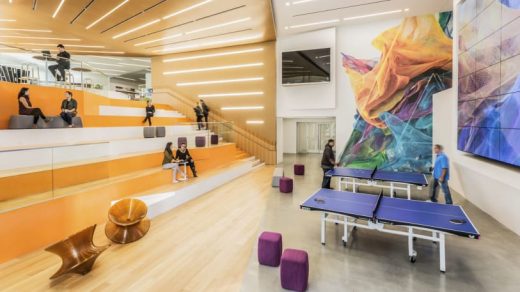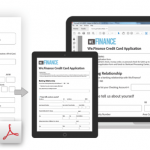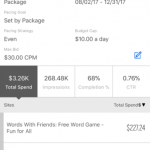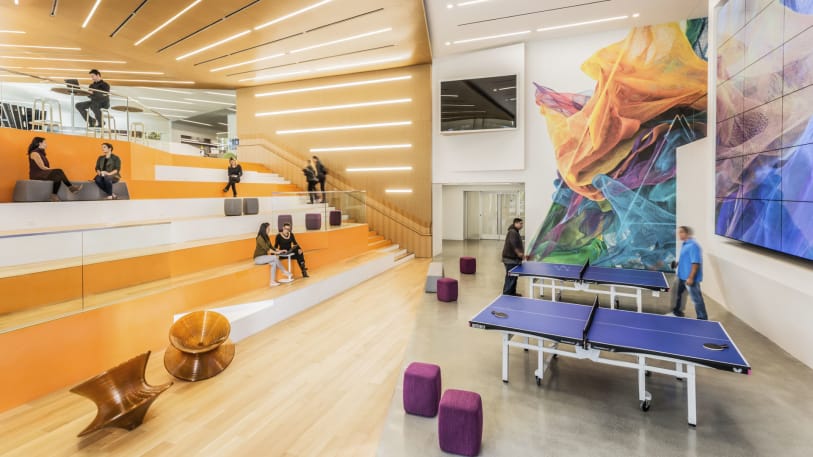Adobe Interns Don’t Make Coffee, They Make Apps
Landing a summer internship, even one without pay, is crucial for college students to earn a “real-world” credit that can boost a resume without much career experience. Yet most interns end up doing the menial tasks that no one else wants to do.
That’s not the case at Adobe, where the internship program in its Research division has been honed over the past decade to give interns real hands-on experience. Almost half of the company’s tech contributions of the last 10 years started with Adobe Research interns or as academic collaborations with college student interns.
For example, Zhangyang “Atlas” Wang interned with Adobe Research in the summer of 2014 while he was a grad student in the department of electrical and computer engineering at the University of Illinois. During his internship he helped create DeepFont, a program that works like Shazaam (the software that can “hear” a bit of a song and identify it for you) but for recognizing fonts. The product shipped in 2015 with Adobe’s latest editions of Photoshop and Typekit and is already popular with the design and academic communities.
Wang is a specialist in deep learning, in which machines do the work of the human brain in recognizing patterns, albeit much faster. Building a database of real-world images with text, Wang and his collaborators taught their algorithm to distinguish fonts and continued to train it to get better at recognizing new ones. A human doing the same work would not only need to be an expert designer, they would need about an hour to determine which font was being used.
There are plenty of other examples, according to Gavin Miller, PhD, who heads up Adobe Research. The Research Lab works on the next generation of computer graphics, computer vision, and big data analytics using advancements like VR, AI, and robots. Miller’s team contributes to features in Adobe desktop and mobile products, including Photoshop. And every summer, the lab gets a little more crowded as the interns report for duty alongside the full-time employees.
This year, 215 interns from 19 countries will be paired up with another intern and a mentor/researcher at Adobe’s San Jose, California, office to collaborate on new ideas. Internships usually last the full three months of summer, but Miller says if the research is on the verge of a breakthrough, some students continue to work as long as their academic schedules allow.
Miller says the vetting process to find qualified interns is pretty stringent. “It’s driven by the track record of work they’ve already done” at their university, he explains. Applicants are mostly PhD students on an engineering track, but they also have some undergraduate students.
Once the student makes it past the first round of vetting, the potential mentor will do a phone interview with the applicant to learn more about their strengths and particular area of study. Miller says this pairing is important because both the mentor and student can eventually benefit.
Applicants who get hired for the summer are paid a salary equivalent to that of a junior engineer (roughly $70,000, according to Glassdoor averages) as well as relocation expenses.
“You can sense the energy in the corridors,” says Miller, once the new crop of interns gets to work. And while he says “it almost feels like running a college,” Miller also notes that Adobe Research also gives the interns an introduction to working in a business by collaborating immediately.
Adobe Research’s interns are required to come in with big ideas for future projects, says Miller. Rather than try to rein in enthusiasm and experimentation, Miller says the philosophy tends to work the other way. “We have a lab full of researchers and they have a risk profile,” he explains. “They have a lot of great ideas but they’re just not sure [if they’ll succeed].” The interns, he maintains, have a much more daring risk profile, which helps the whole group stretch. “The obligation is on the mentors to teach as well as learn,” Miller adds.
Current Georgia Tech student Laurel Warrell interned last summer with Adobe Research principal scientist Walter Chang on their PDF product. Miller says Warrell came in with the thinking that the document “could be a bit more exciting” and suggested adding a virtual reality component.
“We usually pick up a VR headset to view something that we normally can’t experience, like outer space or a standard experience in a new way,” Warrell explained in a previous interview. “Once you put on the headset, you are entering one of the images in your PDF.” Miller says the team realized how popular a panoramic photographic walk into a document could be when the video demo went viral.
Miller points out that Adobe Research interns are allowed to publish the work that they do during the program and get their name on the patent if their product comes to market. Over 90% of Adobe research papers published originated from an intern collaboration.
Of course, says Miller, ideas need to be relevant to Adobe’s business. But because the company is about more than just a single product, “It is hard to come up without a potential use,” he asserts. Often, he says, the research team can see a direct link to existing product. Miller notes that interns are happy to start developing a new idea from scratch on a new platform. That mind-set also helps the existing employees to embrace a clean slate rather than giving in to the temptation to iterate on an existing product.
Current research from the National Association of Colleges and Employers (NACE) indicates that paid internships lead to jobs more often. Sixty-four percent of new hires in North America in 2016 started as interns, and Miller himself offered one of his latest student collaborators, T.J. Rhodes, a full-time job. Rhodes developed a way to create more realistic 3D photo images that could boost CGI animation and video game production. Thanks to Adobe’s intellectual property policy, Rhodes gets to put his name on the patent.
Intern contributions like Rhodes’s are one of the reasons Miller says the intern program is continuing to grow. For her part, Warrell defined her internship experience as boundless. “I never felt restricted,” she said. “We are free and encouraged to be inventive and resourceful.”
Fast Company , Read Full Story
(30)














